#Angraecum sesquipedale
Photo

#angraecum sesquipedale#Jindai Botanical Garden#Tokyo#アングレカム・セスキペダレ#神代植物公園#東京#Voigtlander Macro APO-Lanther 125mm F2.5 SL
10 notes
·
View notes
Text
Sex-appeal, l'intimité de la nature exposée au Muséum de Toulouse
See on Scoop.it - Variétés entomologiques
"... l'exposition "Sex-appeal, la scandaleuse vie de la nature", au Muséum de Toulouse, dévoile l'intimité méconnue de la biodiversité et bat en brèche les clichés."
AFP, 25/10/2023
"... Jusqu'au 7 juillet, l'exposition révèle le florilège d'odeurs et de stratégies déployées par les plantes pour séduire insectes ou animaux, qui les pollinisent.
"Ainsi les savants se sont longtemps interrogés sur la fécondation de l'orchidée de Madagascar, Angraecum sesquipedale, son pollen semblant hors d'atteinte au fond d'un éperon de près de 30 cm.
En fait, elle a comme "assistant" le sphinx Xanthopan morganii praedicta, papillon nocturne muni d'une fine trompe assez longue pour atteindre le nectar. Le mystère, qui intriguait Charles Darwin, ne sera élucidé qu'en 1903, 21 ans après la mort du naturaliste britannique.
Puis l'exposition, qui s'étend sur 300 m2, aborde la "sexualité bestiale" des animaux, leurs mille et une façons de séduire - chants, danses, joutes - et de s'accoupler."
(...)
"Il s'agissait de traiter autant les femelles que les mâles: près d'os péniens de différentes tailles sont exposés des os clitoridiens, présents seulement chez certains spécimens et minuscules.
"L'os pénien est largement étudié. Ce que l'on sait beaucoup moins, c'est qu'il existe des os clitoridiens et nous avons réussi à en trouver, qui n'ont jamais été exposés. C'est une première mondiale !", dit Isabel Nottaris devant un "Baubellum" (bijou, en latin) présenté, avec d'autres, dans des écrins de velours noir."
(...)
-------
NDÉ
Sex-appeal, la scandaleuse vie de la nature - Muséum de Toulouse https://museum.toulouse-metropole.fr/exposition/a-venir-sex-appeal-la-scandaleuse-vie-de-la-nature/
0 notes
Photo

Angraecum sesquipedale (Darwin's Orchid): The famous Darwin orchid, with large white evening-fragrant flowers accented by 12-inch long nectary spurs! This winter blooming species is native to the island of Madagascar. Grow in medium to high light and water when the potting media just dries out. A rare orchid in today's market. We have a handful of flowering size and seedling size plants available as of January 2023! https://www.instagram.com/p/Cou3xRjLvYe/?igshid=NGJjMDIxMWI=
1 note
·
View note
Link
The request for inclusion of two orchids will come in the big orchid exhibitions, the two orchids are called Vanilla Orchid and Darwin Orchid.People are so interested in Darwin orchids because of the connection between Charles Darwin and his theory of evolution.
2 notes
·
View notes
Photo
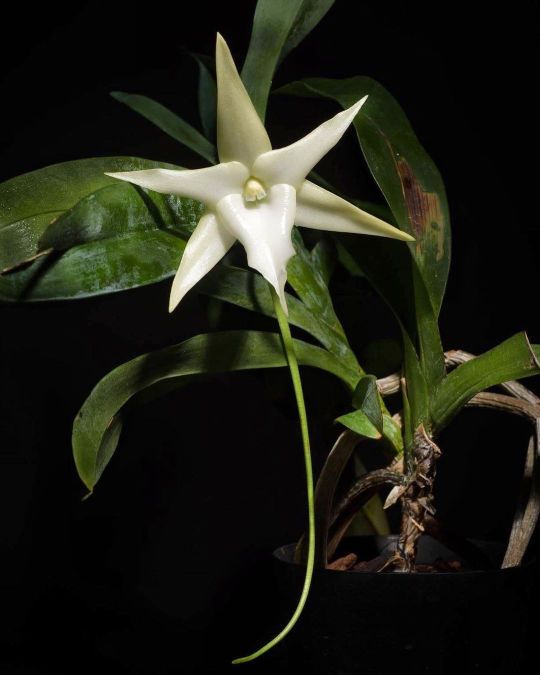
Charles Darwin first saw the Angraecum sesquipedale orchid from Madagascar in 1862. Its foot-long green throat holds nectar, but only at its very tip. "Astounding," Darwin wrote of this strange adaptation. "What insect could suck it?" He predicted that Madagascar must be home to an insect with an incredibly long feeding tube, or proboscis—but no such insect was discovered during his lifetime. Decades after his death, his insight was confirmed. A naturalist in Madagascar discovered the giant hawk moth (Xanthopan morganii praedicta), which hovers like a hummingbird as its long, whip-like proboscis probes for the distant nectar. The moth's scientific name honors the prediction of the scientist who never saw it but whose theory told him that it must exist. Photo: sunoochi, CC BY 2.0, flickr https://www.instagram.com/p/COJ87WYAT6N/?igshid=1ig2t4j3n02ht
442 notes
·
View notes
Text
O curioso caso da orquídea e a mariposa de Madagascar
O curioso caso da orquídea e a mariposa de Madagascar
Angraecum sesquipedale e Xanthopan morganii praedicta
Conexões natureza, esse é o tema da nossa coleção 2022. Durante esse ano, apresentaremos 12 casos simbólicos de parceria entre diferentes espécies que, com o passar do tempo, aprenderam a conviver e trabalhar em equipe.
QUANDO DARWIN SUPÔS A EXISTÊNCIA DA MARIPOSA
Em 1862, Charles Darwin ficou intrigado ao ver uma orquídea originária de…
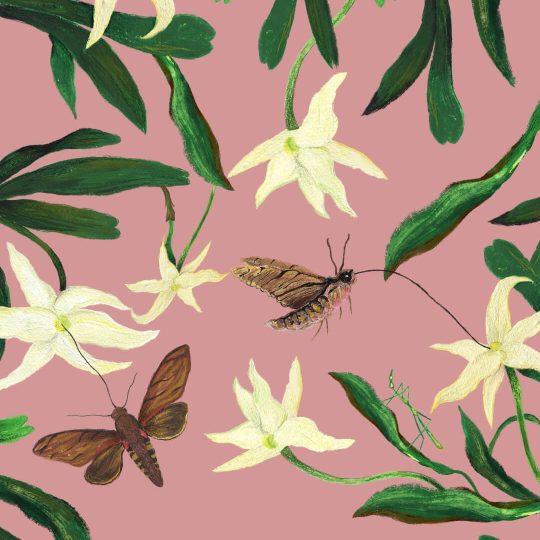
View On WordPress
#biologia#coevolução#darwin#flora#ilustração#loja fauna#madagascar#mariposa#mutualismo#natureza#Plantas#simbiose
3 notes
·
View notes
Photo

Angraecum Sesquipedale, 1880
Charles Scowen :: Angraecum Sesquipedale 1137, 1880. Vintage albumen print. Scowen & Co., Ceylon. | src Peter Fetterman Gallery
#charles scowen#botanicals#close up#flower#Blumen#fleur#flor#flower portrait#albumen print#scowen and co.#charles t. scowen#orchid#orchids#botanical#1880s#flora#fiore#1880
52 notes
·
View notes
Photo

Xanthopan morganii praedicta (moth) and Angraecum sesquipedale (orchid)
#Darwin#evolution#Darwin's hawkmoth#orchid#star#star orchid#darwin's orchid#darwin's star orchid#art#insects#moth#hawkmoth#sphingidae
3 notes
·
View notes
Text
A Match Made by Coevolution
Darwin once predicted the existence of a pollinator after examining the star-shaped flower of the orchid Angraecum sesquipedale, a flower whose nectar is at the end of a 30 cm tube. Darwin wrote that “in Madagascar there must be moths with probosces capable of extension to a length of between ten and eleven inches [25.4–27.9cm].” Twenty years after Darwin’s death, his prediction was proven correct with the discovery of a moth, Xanthopan morganii praedicta, which boasted a proboscis 20 cm in length. In 1992, natural history observations of the moth feeding on the extreme flower and transferring pollen provided even more evidence that this plant and insect were tangled in a coevolution that resulted in their extreme morphology.
Coevolution is now a cornerstone of biology and has been well developed through examples of flowering plants and insects, parasites and hosts, predators and prey, and even gut microbiomes and human health. In fact, the influence of closely associated species on each other in their evolution is so ubiquitous one could argue that evolution is coevolution—as the boundary between what is an individual versus a consortia of different species blends as we dive deeper into the units that natural selection is acting upon. The microbiome and human health example helps illustrate the problem of defining an individual, specifically because scientists now think that microbial cells outnumber human cells in your body. Moreover, there is growing evidence this diversity of symbionts on our bodies complete metabolic pathways and serve other physiological functions. Coevolution crisscrosses the natural histories of organisms, creating nuances that sometimes complicate things.
With so much excitement and work surrounding coevolution, it is romantic to stumble across an example of coevolution fit for a kindergarten class. In the collection of birds at the Carnegie Museum of Natural History, we recently finished an analysis of 24 Costa Rican hummingbirds and the pollen types found on their bodies and were reminded of Darwin’s predictions of coevolution over 100 years ago with orchids and moths. The White-tipped Sicklebill (Eutoxeres aquila) is a hummingbird with an extreme bill curve, with an appearance that would remind kindergarteners of Jim Henson’s Gonzo Muppet. Putting this bird next to its favorite food, Centropogon granulosus, illustrates coevolution in an exciting way that doesn’t tangle you up in learning about microbes or imagining other complex ecological relationships. Like Darwin’s orchid and moth, this hummingbird and its preferred flower allow us to see coevolution is all around us.
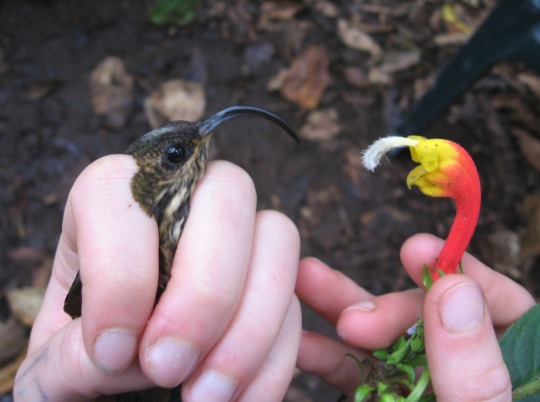
In an ongoing study at the Carnegie Museum of Natural History’s Section of Birds, we were reminded of the natural history observations and predictions that led to an explosion in the field of coevolution. By studying pollen types collected from hummingbirds in Costa Rica we confirmed that the White-tipped Sicklebill (Eutoxeres aquila) feeds mostly on Centropogon granulosus, a match made by coevolution.
Chase Mendenhall is Assistant Curator of Birds, Ecology, and Conservation at Carnegie Museum of Natural History. Museum employees are encouraged to blog about their unique experiences and knowledge gained from working at the museum.
36 notes
·
View notes
Text
New species has longest tongue of any insect | Science
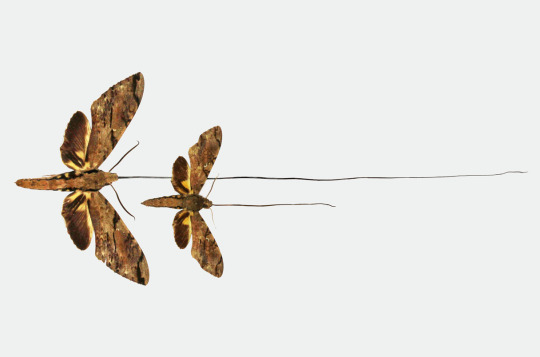

On the island of Madagascar there lives a large moth with a tongue long enough to make Gene Simmons green with envy. Its name? Xanthopan praedicta. Its business? Sucking the pollen out of a very long and skinny orchid.
This moth’s whole history is absurd. Charles Darwin predicted its existence when he first saw the shape of the Angraecum sesquipedale orchid (which apparently prompted him to exclaim, “Good heavens, what insect can suck it?”). About 2 decades later, in 1903, the moth was actually discovered, and ever since, the Malagasy variant has been considered a subspecies of its mainland counterpart, X. morganii. But no longer.
Using a slew of morphological and genetic tests, scientists argue the island moth is substantially different enough from its mainland counterpart to merit its elevation to the species level, the Natural History Museum announced yesterday.
Working with a combination of wild moths and museum specimens, the team reports that DNA barcoding, a technique that can be used to identify organisms by looking at DNA sequence differences in the same gene or genes, shows the moth’s genetics differ by as much as 7.8% in key gene sequences, which actually makes the morganii moths more closely related to a few other mainland subspecies than praedicta.
But what about the tongues? The Malagasy moths take the prize here, with proboscises that measure 6.6 centimeters longer on average, as seen in the picture above. Adding to their legend, the team also reported finding one individual praedicta specimen with a proboscis that measured a whopping 28.5 centimeters when fully stretched, which would constitute “an absolute record” for any moth tongue ever measured. Congratulations!
New post published on: https://livescience.tech/2021/10/03/new-species-has-longest-tongue-of-any-insect-science/
0 notes
Photo
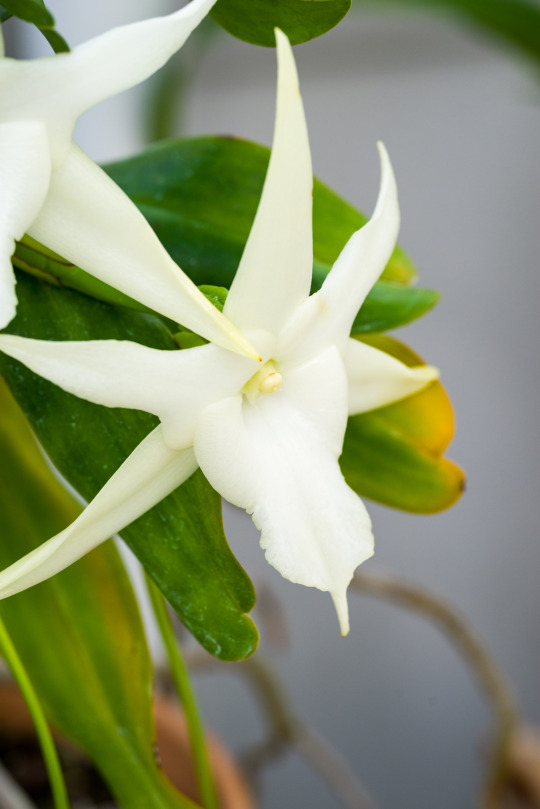
#angraecum sesquipedale#Jindai Botanical Garden#Tokyo#アングレカム・セスキペダレ#神代植物公園#東京#Voigtlander Macro APO-Lanther 125mm F2.5 SL
10 notes
·
View notes
Photo

Angraecum sesquipedale (at Chez Moi) https://www.instagram.com/p/CD93mgipADVuKtOdq_KfxWE3eK8Oa5EZHqzhwc0/?igshid=15na2oe80z6cu
0 notes
Note
G, O, Q! :)
@honeyandflower woohoo asks! Thanks :DG - My best friend who's in Alabama, Trey, after we finished playing video games tonight :)O - EVERYWHERE! Okay, more specific would be Australia, South Korea, Israel, Scandinavia, Amazon jungle, France, Galapogas IslandsQ - I like wisteria, hellebores, forget me nots, irises, Angraecum sesquipedale (for the Darwin story)
4 notes
·
View notes
Photo

🔴Você conhece a Orquídeas Angraecum ??? Vamos aprender sobre ela . . . 🔴As orquídeas Angraecum, também conhecidas como orquídeas-cometa, é um gênero de plantas muito interessante. A maioria vem da África ou Madagascar, embora algumas espécies provenham de outros lugares. A espécie mais famosa é a Angraecum sesquipedale. . . 🔴Estas orquídeas são monopodiais, então há um único caule que cresce para cima com folhas alternadas e as hastes florais e raízes afloram logo acima das folhas. . . 🔴Em algumas ocasiões, o caule se ramifica, mas isso acontece em algumas espécies mais do que outras. Elas costumam crescer como epífitas, mas algumas outras crescem como litófitas também. . . 🔴Estas plantas variam muito em questões vegetativas, pois algumas são muito pequenas, outras muito grandes, algumas crescem na vertical, já outras pendem para baixo. São plantas que afloram seu perfume a noite e são polinizadas por mariposas. . . sobre o guia. Esperamos você lá😘. (em Orquideas) https://www.instagram.com/p/B1gvBXEBzyw/?igshid=1baabxddct8ef
0 notes
Photo

Charles Darwin first saw the Angraecum sesquipedale orchid from Madagascar in 1862. Its foot-long green throat holds nectar, but only at its very tip. "Astounding," Darwin wrote of this strange adaptation. "What insect could suck it?" He predicted that Madagascar must be home to an insect with an incredibly long feeding tube, or proboscis—but no such insect was discovered during his lifetime. Decades after his death, his insight was confirmed. A naturalist in Madagascar discovered the giant hawk moth (Xanthopan morganii praedicta), which hovers like a hummingbird as its long, whip-like proboscis probes for the distant nectar. The moth's scientific name honors the prediction of the scientist who never saw it, but whose theory told him that it must exist. Photo 1: sunoochi, flickr Photo 2: Xanthopan morgani [Natural History Museum of London] https://www.instagram.com/p/B7z_xOMgbN4/?igshid=19rtgnmf505c1
176 notes
·
View notes